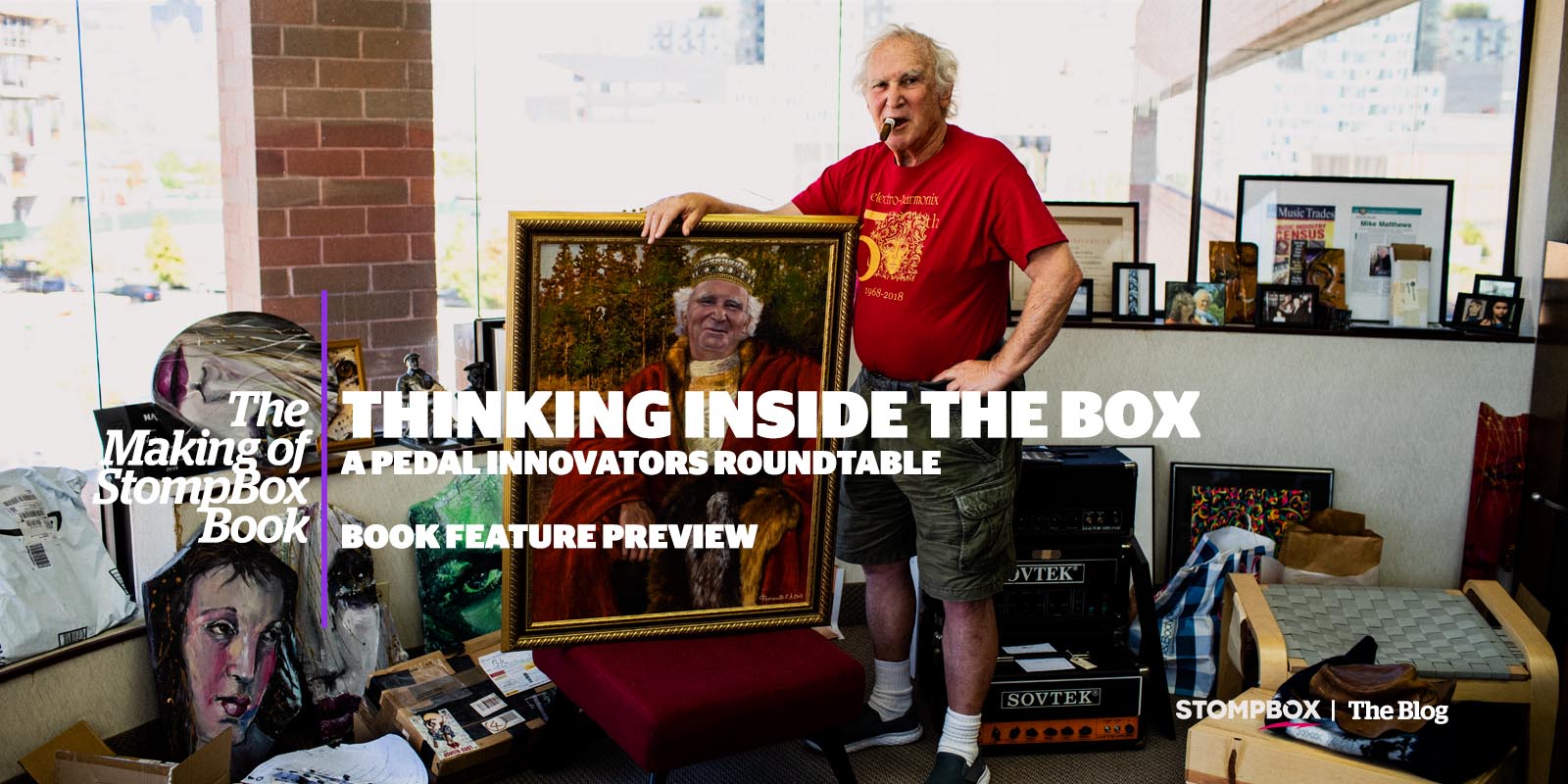Thinking Inside the Box | Book Feature Preview
If it isn’t clear to you by now, the musicians who use effects pedals love to talk about them. While exhibits different levels of fanaticism and attention to detail, stompboxes clearly offer unique insight into the creation of your favorite music. But what company developed the fuzz beloved by Thee Oh Sees‘ John Dwyer? Who’s behind the Russian Big Muffs used by The Mars Volta bassist Juan Alderete, and how do they differ from the original EHX’s muffs? In the Stompbox feature “Thinking Inside The Box,” writer Tzvi Gluckin sat down with 15 pedal builders to discuss the state of the industry, panel-style. Legends such as Mike Matthews of Electro-Harmonix, Mike Piera of AnalogMan, Robert Keeley of Keeley Electronics and contemporary leaders including Oliver Ackermann (Death by Audio), Joel Korte (Chase Bliss) and Jamie Stillman (Earthquaker Devices), to name a few, were happy to get into the nitty gritty of stompbox development.
“When creating a book about the pedals of the world’s greatest guitarists, you can’t not talk to the people who built these pedals,” says photographer Eilon Paz, adding, “getting 15 passionate builders to talk about their craft will inevitably lead to massive amounts of information with very little space to include in the final printed piece.” On the Stompbox blog, you can read Tzvi’s full interviews with each pedal maker, who discuss technique, trends and more.
While effects pedals were once relegated to a handful of makers in the ’60s, the marketplace has grown exponentially in the ’80s, ’90s and in the new millennium. Brian Wampler of Wampler Pedals (whose stompboxes have been used by Brad Paisley and Aerosmith co-founder Joe Perry) founded his eponymous company in the early 2000s, noting that effects pedals are a “weird market where things are drastically different on one hand, and those products sell; and also things aren’t different at all, and those products sell.”
“As other people take these different avenues and create things that they’ve spent their life’s work on developing, you don’t necessarily want to go down that same route. You are always looking for different creative takes, or different interesting places where nobody is doing anything in the industry.” —Oliver Ackermann
The development of effects pedals follows the development of music: there’s something for everyone. Strymon co-founder Dave Fruehling discussed the difference in preference between analog and digital boxes, contending that there’s no “right” choice. “There are things that digital allows that analog could never accomplish, and there are things that analog can do that digital struggles with, but digital technology is advancing constantly,” he says. “Most of the purist complaints about digital are really about poor design or execution. It all starts with great analog. Design is another key factor, he notes. “The pedal’s look is most definitely both ornamental and functional. It must look good but also has to be functional. It is the face of the product, and that is as important as the shape, feel, and sound.”
Yet this explosion of producers isn’t a challenge, according to Mike Matthews, who founded Electro-Harmonix in 1968, developed the Big Muff in late ’69 and dominated the pedal game throughout the 1970s. “There are so many Big Muff clones, it actually helps us. We sell so many Big Muffs and so many different models that our selling prices are cheap. These clones cannot compete with us,” he says. “I think people would rather buy an original than a clone in general.” Yet the environment and production standards have affected Mike’s business. Rather than create waste from soldering, Electro-Harmonix imports their boards and chassis, then assembles and tests their pedals in New York City. “Some people think there are differences in sound, and every component you buy has other parasitic components on it, so some things might have a slightly different sound. But they’re basically exactly the same,” he assures.
In an industry of self-proclaimed nerds, acquiring new knowledge and technique is encouraged. “As other people take these different avenues and create things that they’ve spent their life’s work on developing, you don’t necessarily want to go down that same route. You are always looking for different creative takes, or different interesting places where nobody is doing anything in the industry,” says Oliver Ackermann of Brooklyn’s Death By Audio (and also of the band A Place To Bury Strangers). “More recently we’ve gotten into computer programming….But you always have to take a step back from everything that you’re learning and ask, ‘Is this really applicable for something that is going to be a tool for someone?'”
And sometimes, tried and true is best. Anthony Macari — who runs Macari’s Musical Instruments in London and acclaimed pedal company Sola Sound, which practically defined the sound of British rock ‘n’ roll — felt like a dinosaur when smaller Japanese pedals entered the market in the 1980s. “Even I was looking at them thinking, ‘Blimey, why are we making these old-fashioned things?,'” he recounts. “I suppose the huge turning point was when people started copying us. We saw this undercurrent of interest in old pedals again. Some people would copy the circuits and we thought, ‘That’s a compliment,’ but then other people got a bit too close.”
Read on to go beyond the Stompbox book. In this “Thinking Inside” collection, you’ll dig deep into the pros and cons of cloning classic designs, the hunt for elusive circuits and chips, raging debates about through-hole versus surface-mount, and even art.
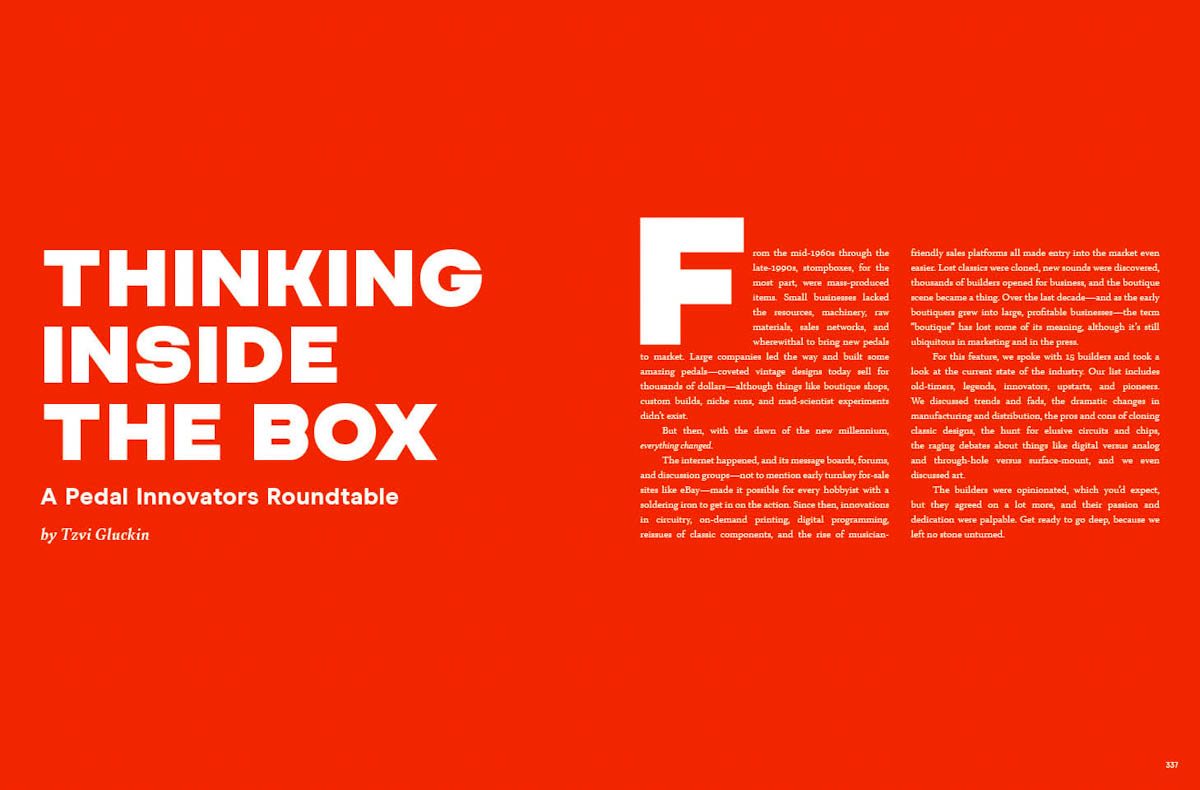
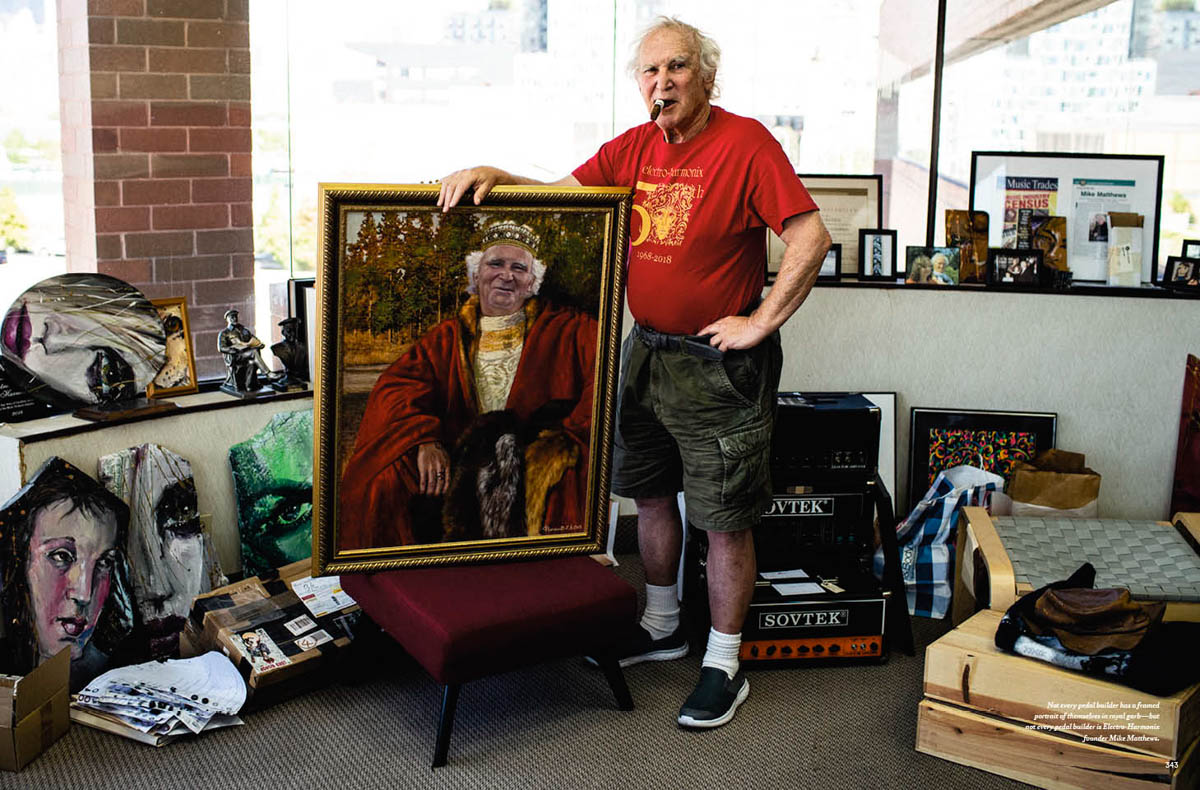
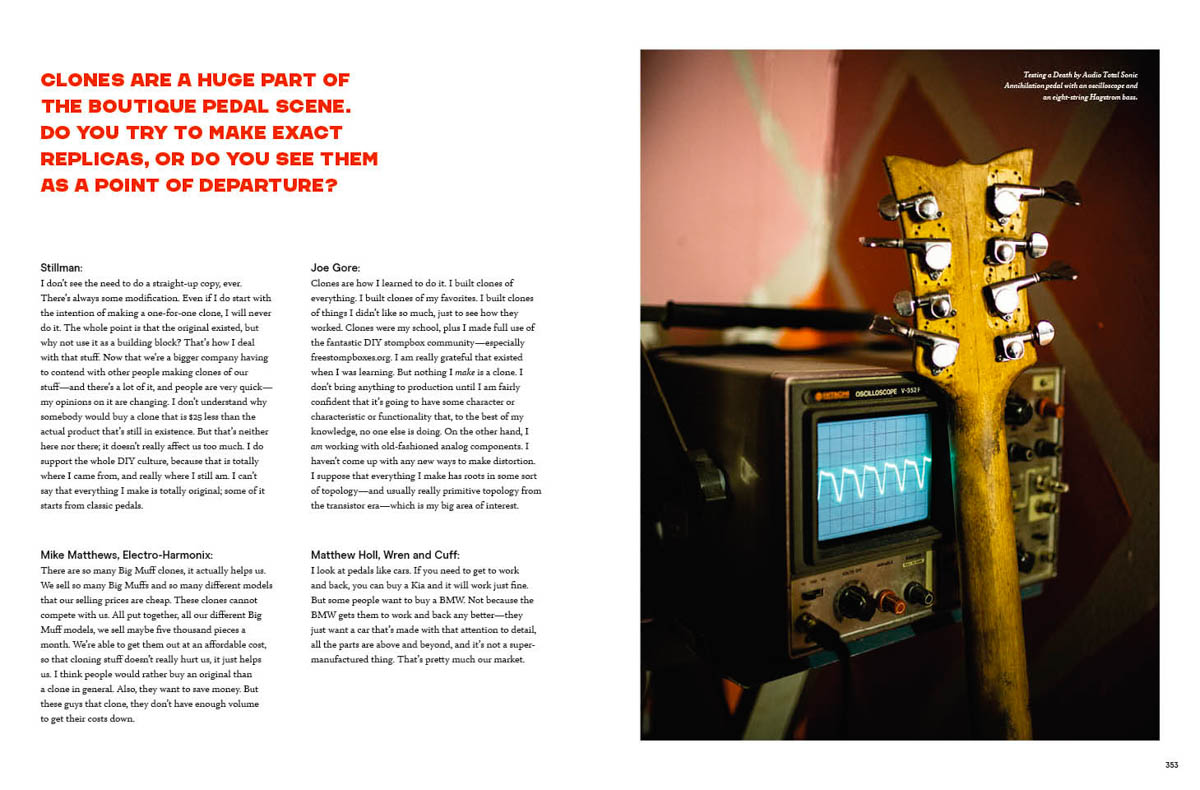
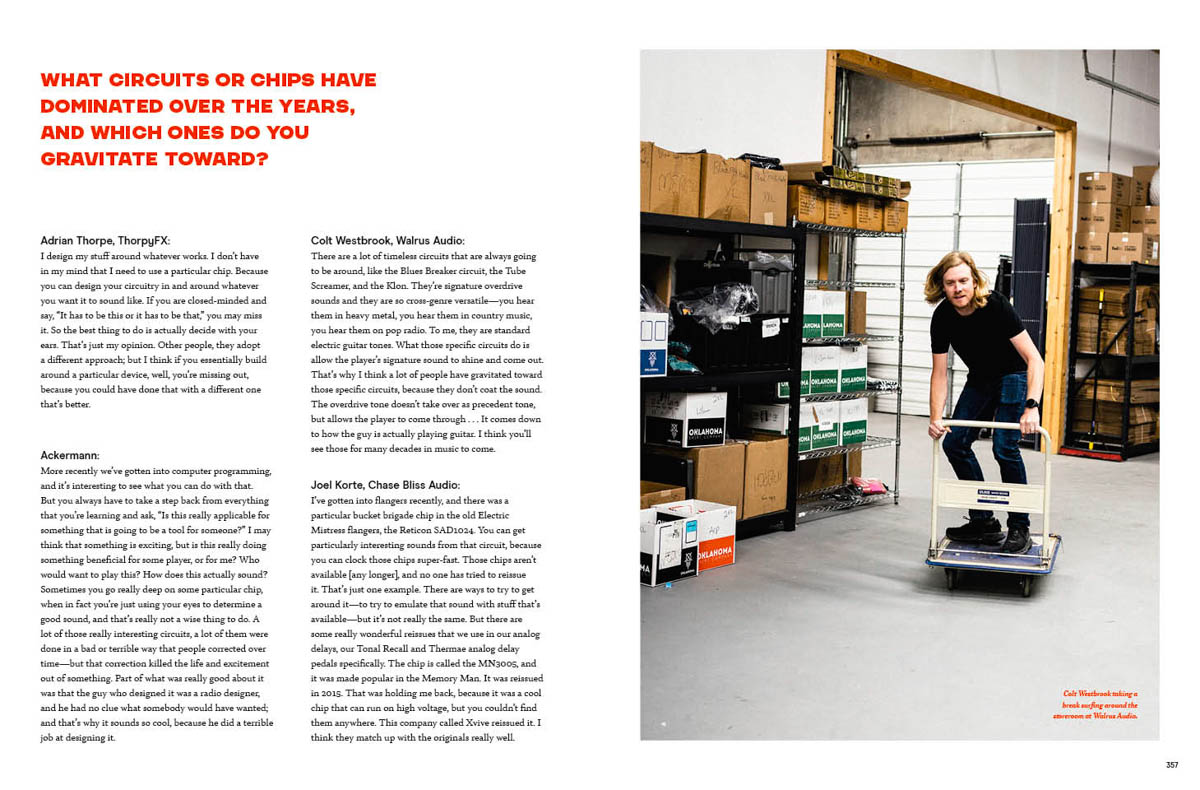
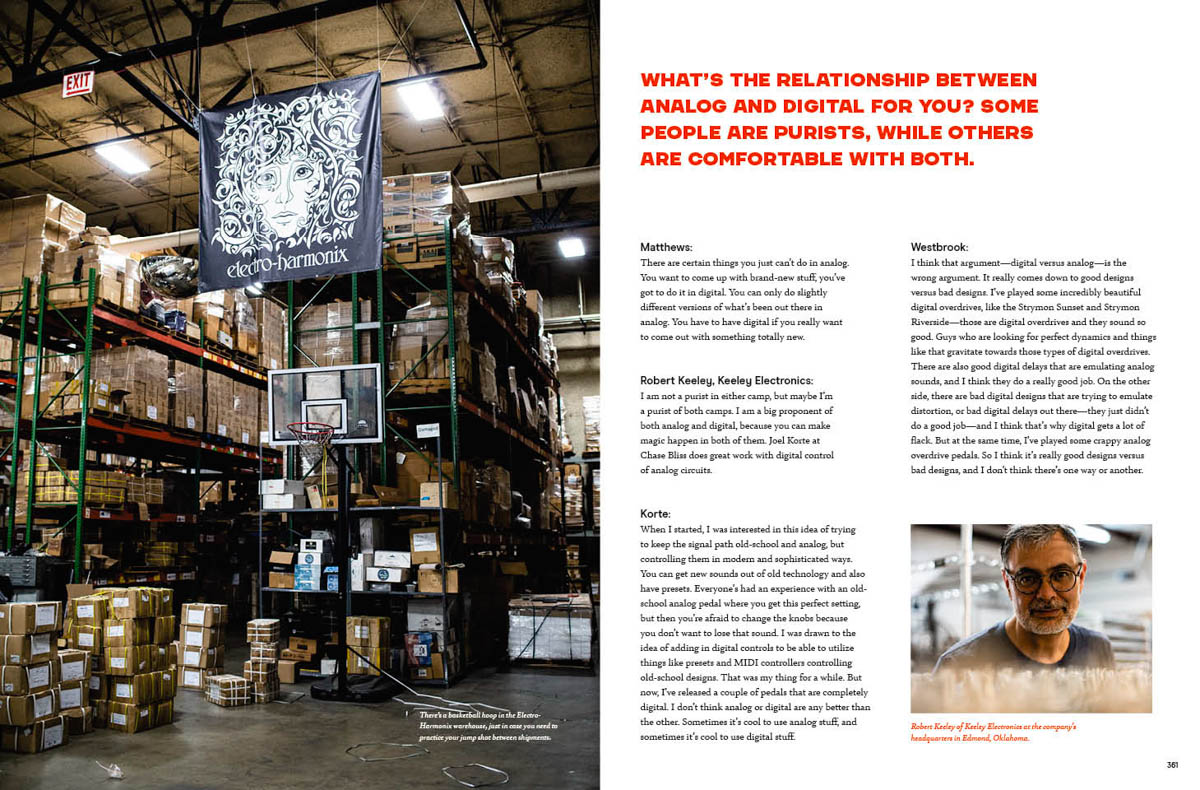
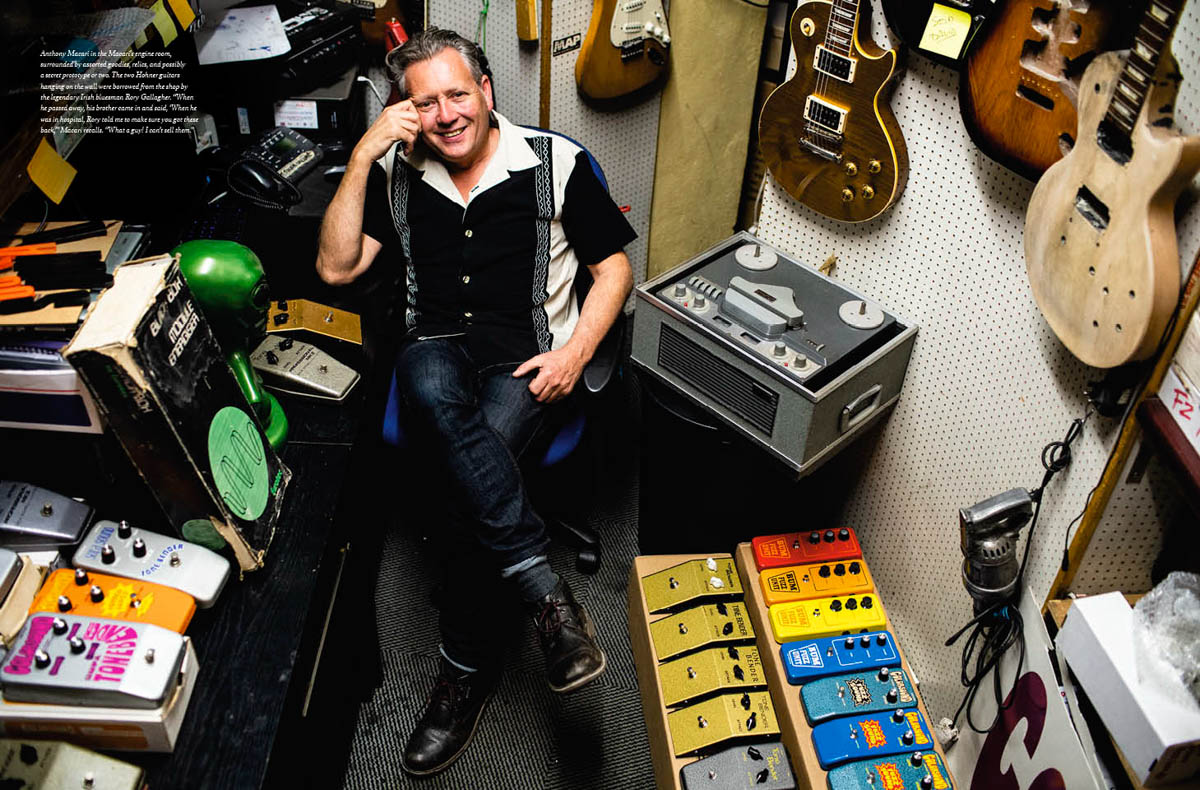
Check out the full Thinking Inside the Box feature in the Stompbox Book. Available Now!
Get on our newsletter for book updates.
